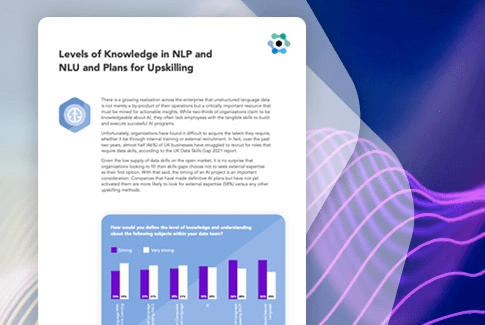
Inside the enterprise, missing or ineffectively managed information can be extremely costly. Not only can it lead to business inefficiencies, but it can even result in lost business opportunities. Semantics can play a key role in making sure that all enterprise information is readily available, especially the unstructured data.
What Does Semantics Mean?
Semantics is the study of the meaning of words and sentences. It uses the relations of linguistic forms to non-linguistic concepts and mental representations to explain how sentences are understood by native speakers.
Semantics can be broken down into the following three subcategories:
- Formal semantics is the study of grammatical meaning in natural language. In other words, it intends to define the meaning of words and phrases based on its grammatical structure.
- Conceptual semantics is the study of words at their core. It focuses on establishing universal definitions for words before they are taken into context.
- Lexical semantics is the study of word meaning. It establishes meaning to words based on their relationships to other words in the sentence as well as their compositional structure.
At its core, we think of semantics as the “magic” that happens when people communicate and, most importantly, when they understand each other. This magic is actually a well-balanced combination of:
- understanding words and phrases;
- having general knowledge;
- and using real-world experience.
For example, to make sense out of a work of art, you need to combine the objective representation with your knowledge of the world. When you consider words in context, you can understand the meaning and the message. That’s semantics!
What Does Semantic Technology Do?
Since we define what semantics is, we can understand why semantic technology is relevant for some of the most critical business activities.
Semantic technology is a way of processing content that relies on a variety of linguistic techniques including text mining, entity extraction, concept analysis, natural language processing, categorization, normalization and sentiment analysis.
Compared to traditional technologies that process content as data, semantic technology focuses not only on the data itself, but the relationships between pieces of data. When it comes to analyzing text, this network of relations enables both high precision and recall when performing search, automatic categorization and tagging activities.
Because of its ability to understand the meaning of the words in context the way that humans do, semantic technology can manage a huge knowledge base to integrate information and data and allow organizations to find the information necessary to make decisions.
Information growth in terms of volume, velocity, variety and complexity, as well as in the variety of ways in which it is being used, makes its management more difficult than ever before. Here, semantics plays a key role in extracting meaning from unstructured data and transforming that data into ready-to-use information.
The following are real-world examples of how semantic technology can be applied to specific use cases.
Semantics for Knowledge Management
Semantic technology helps organizations leverage unstructured information by transforming it into usable, searchable and actionable intelligence. It does this by extracting key contextual information that can be used to categorize information by its key elements. This enables organizations to better manage their metadata and fuel process improvements.
Semantics for Customer Service
To deliver a quality customer experience today, you must be able to do three things well: streamline customer interactions, maintain a high level of customer satisfaction and listen to the voice of the customer. Semantic technology enables you to implement advanced listening platforms that facilitate faster responses to customer inquiries with information than can lead to faster issue resolution.
Semantics for Operational Risk Management
External and internal sources contain valuable insight that can help you identify risk and mitigate potential threats to your supply chain and operational ecosystem. To minimize operational risks and threats hidden in your unstructured data, semantics can make the vast amount of content required by support analysts readily available to fuel the risk assessment process with actionable insight and intelligence.
Semantics is critical to so many core enterprise processes. How will it influence the future of your organization?
Originally published August 2016, updated May 2022.


